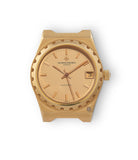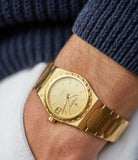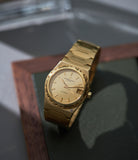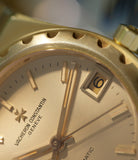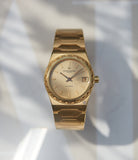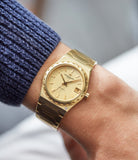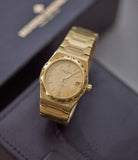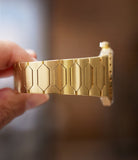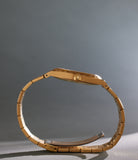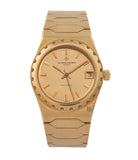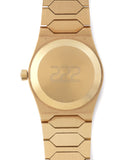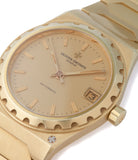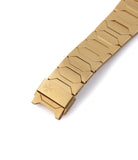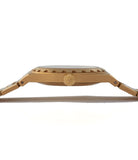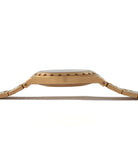This Vacheron Constantin 222 bears testament to one of the most disruptive periods of watchmaking, in the wake of the Quartz Crisis. Alongside the Royal Oak and the Nautilus, it represents the efforts of the so-called "Holy Trinity" of watchmaking to remain relevant in this new context, with their integrated bracelet sports watches. This mid-size ref. 46003 "222" in yellow gold is preserved in a remarkable condition.
You May Also Like
'Jörg Hysek just walked in with his drawings and sold them to us. The watches were then developed in-house, with outside specialists being commissioned to make various components.'

The gold and stainless steel version of the mid-size '222'.
The Birth of the 222
In the wake of the Quartz Crisis, watchmaking manufactures were under increased pressure to justify their existence, as the very idea of a mechanical watch was under threat.
Against this backdrop, the phenomenon of the luxury steel sports watch with an integrated bracelet was born. Audemars Piguet released the Royal Oak in 1972, followed closely by the Patek Philippe Nautilus four years later, both of which were famously penned by Gérald Genta. Since then, these watches have gained a cult status which is difficult to quantify.
One year after the release of the Nautilus, in 1977, Vacheron Constantin put forward their own version of an integrated bracelet sports watch, with the 222. Designed Jörg Hysek, it was released to celebrate the 222nd anniversary of the manufacture. The 222 was produced for a brief eight-year period, between 1977 and 1984.
During that time, the core models of the 222 collection were the reference 44018, known the “Jumbo”, and the reference 46003, which was the mid-size version of the same design. According to factory records, around 700 'Jumbo' pieces and 1,000 'mid-size' pieces were produced across all metals, making these two variants of the 222 particularly uncommon. In comparison, the Nautilus and Royal Oak were made in far greater numbers.
Both Audemars Piguet and Patek Philippe also offered “Jumbo” and mid-size versions of their distinctive Royal Oak and Nautilus. The latter often aimed to bring the design to a wider audience, who at the time preferred more modestly sized pieces. Vacheron Constantin continued to build on this trend, with this reference 46003 being a prime example of how the manufacture introduced a smaller diameter, whilst keeping the angular case and a high-quality automatic movement.












































































































































































































